Disclaimer: The writer has not personally used any of the devices outlined in this article. All information is provided as a synopsis from internet reviews on outdoorgearlab.com, hikingguy.com. Please purchase devices at your own discretion.
Following the launch of Apple Emergency SOS satellite connectivity with the new iPhone 14 last November, there have been a number of stories about the service aiding the rescue of its users. In early December, an Alaska man who was stranded in an area without cell service on a below-freezing night during a 45-mile snowmobile ride was able to activate the emergency SOS system from his iPhone, sending GPS coordinates to the Apple Emergency Response Center. This information was then relayed to the Alaska State Troopers who helped mobilize a local search and rescue team, eventually leading to his successful recovery and transport back to the closest town.
Just two weeks later, in Los Angeles County California, two motorists had driven off of the side of a mountain, crashing 300 feet into a canyon. One of the driver’s iPhone 14 detected the crash and activated the emergency SOS system. After exiting the vehicle, the victims followed prompts on the iPhone and were connected with Crescenta Valley police station and the county sheriff’s office, which eventually led to their helicopter extraction.
Satellite-aided search and rescue stories like these are not new. However, until the present, they were limited to those remote adventurists who could afford the purchase of certain (and often expensive) satellite communication devices or phones. Now, with a $450 million dollar investment by Apple into the existing ground and satellite infrastructure of Globalstar, one of the world’s major global satellite services, they will be putting satellite communication access into the pockets of millions of people.
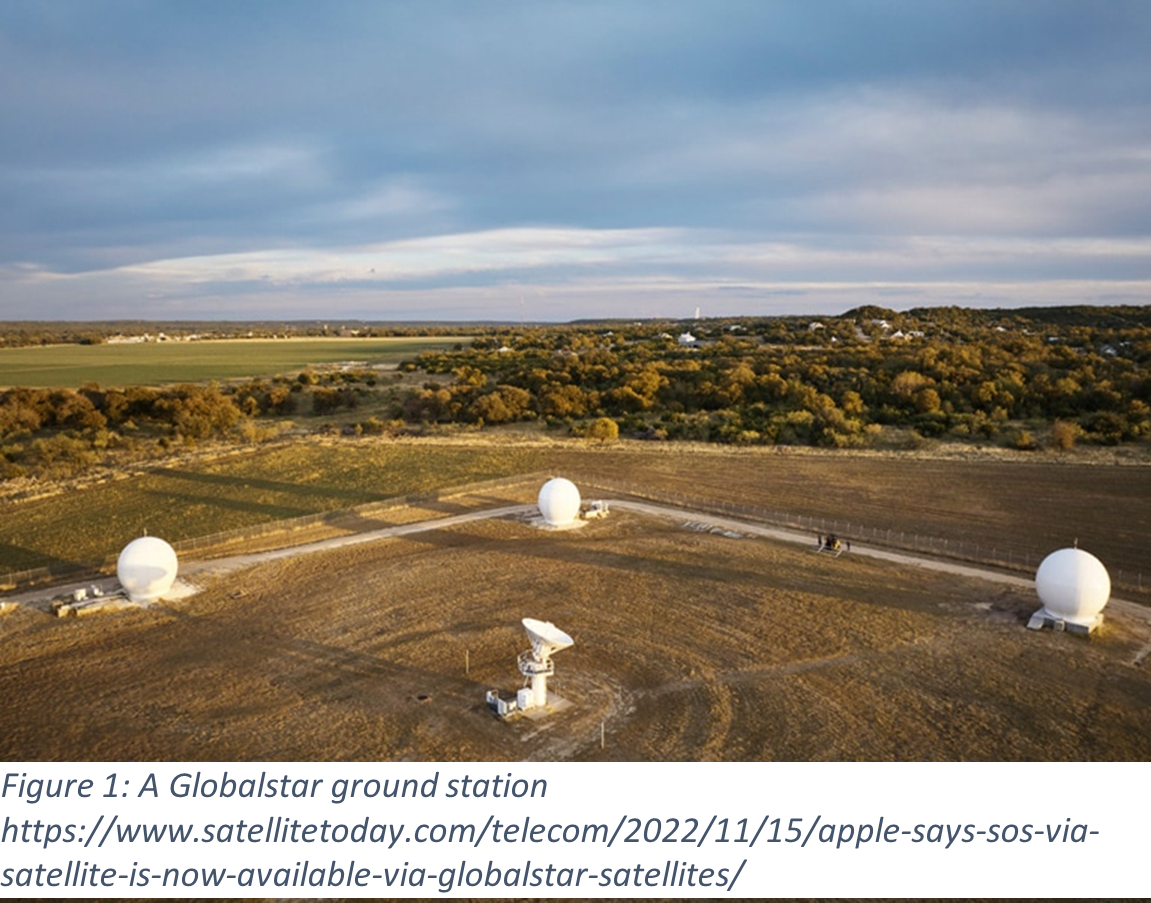
Telecommunications via satellite were first launched in the late 1990s by two US companies, Globalstar and Iridium. However, due to the high costs of satellite phones, subscription services, and fees for use, public buy-in was limited and the companies quickly filed for bankruptcy. Each were eventually revived and have remained in business, with significant use by military outfits (satellite phones and internet access) and outdoor enthusiasts in remote areas (personal locator beacons and satellite devices with one and two-way messaging). Other companies such as T-Mobile/SpaceX, Qualcomm/Android are following suit behind Apple and have announced plans for satellite connectivity for everything from messaging to voice calls. There are also several companies currently creating new cellular space networks.
It’s a bird, it’s a plane, it’s a….LEOSAR satellite?
Unlike terrestrial cell towers, which are limited by the need for infrastructure to be installed in varying terrain on the Earth’s surface to offer network coverage, satellites offer communication connectivity nearly anywhere in the world as they orbit the Earth in space. There are two major classifications of satellites based on their distance above the Earth’s surface; geostationary (GEOSAR) satellites orbit around 22,000+ miles above the Earth and low earth orbit satellites (LEOSAR), which are much closer at around 400 to 700 miles.
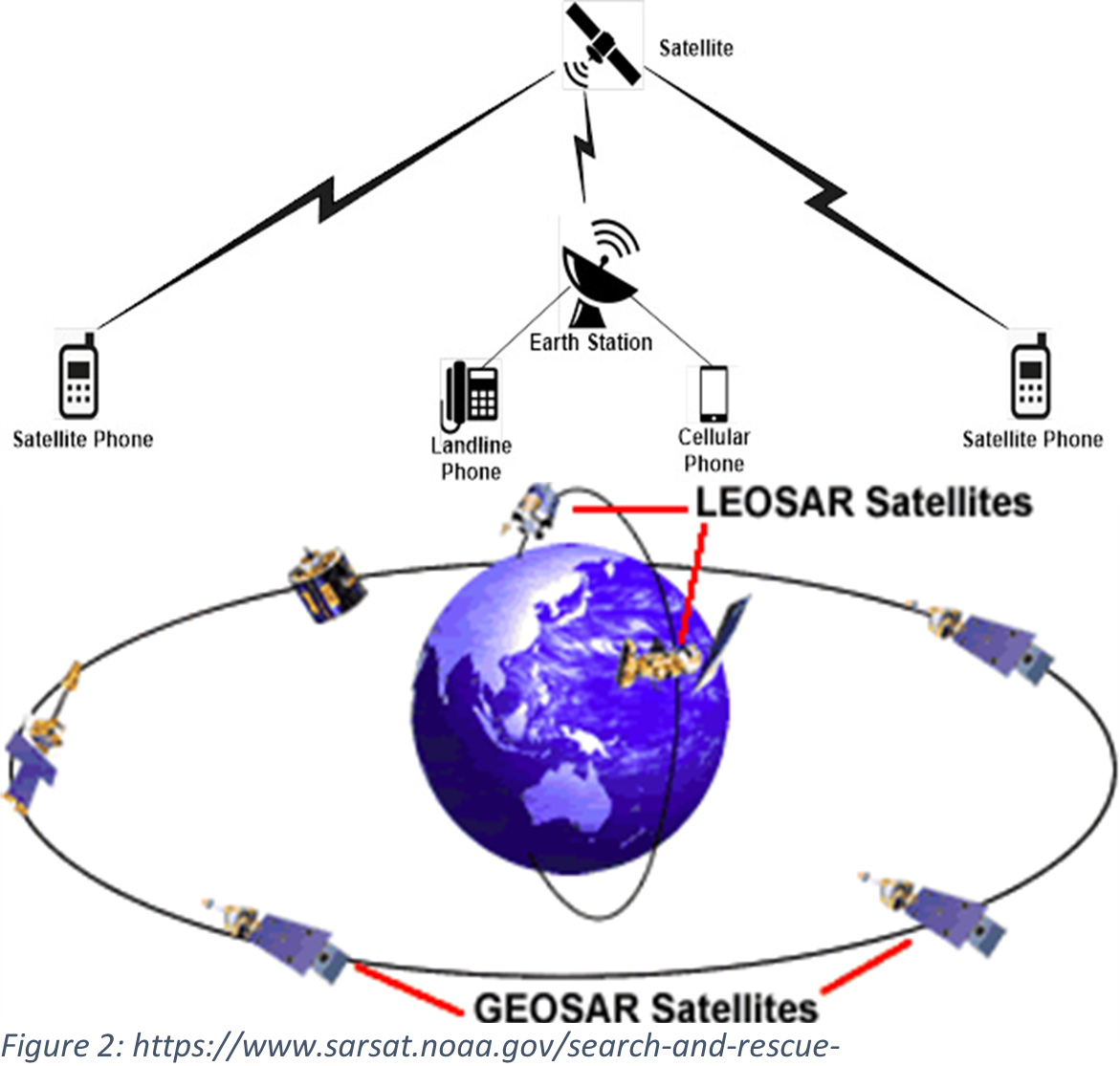
The GEOSAR system is limited by its distance from Earth and the resultant delay in data transmission. There are also fewer of these satellites in orbit due to their weight and cost which can lead to gaps in coverage at certain latitudes. Messages can also easily be blocked by heavy terrain, such as mountain ranges and forest cover. LEOSAR systems, which are what are operated by Globalstar and Iridium, have the advantage of being lighter and smaller. There are many more of these satellites in high-speed orbit per fleet (about 40-70), which allows for faster communications and fewer areas of dropped coverage, though users must remain within a direct line of digital “sight” of the satellites to maintain connection.
Comparing Devices
As it currently stands, Apple’s Emergency SOS service is free to its iPhone 14 users and serves a similar function to an emergency beacon with the added feature of text communications. If in distress and outside of cell tower coverage, the iPhone will suggest activation of the SOS satellite function (see Figure 3) prompting the user to find a clear line to a nearby satellite and send GPS coordinates as well as a brief text message regarding the nature of the emergency to the dispatch center. According to reports, in the rescues of the Alaska snowmobiler and the California motorists, search and rescue teams commended the clarity of the messaging and accuracy of GPS coordinates transmitted from the iPhones during the emergencies.
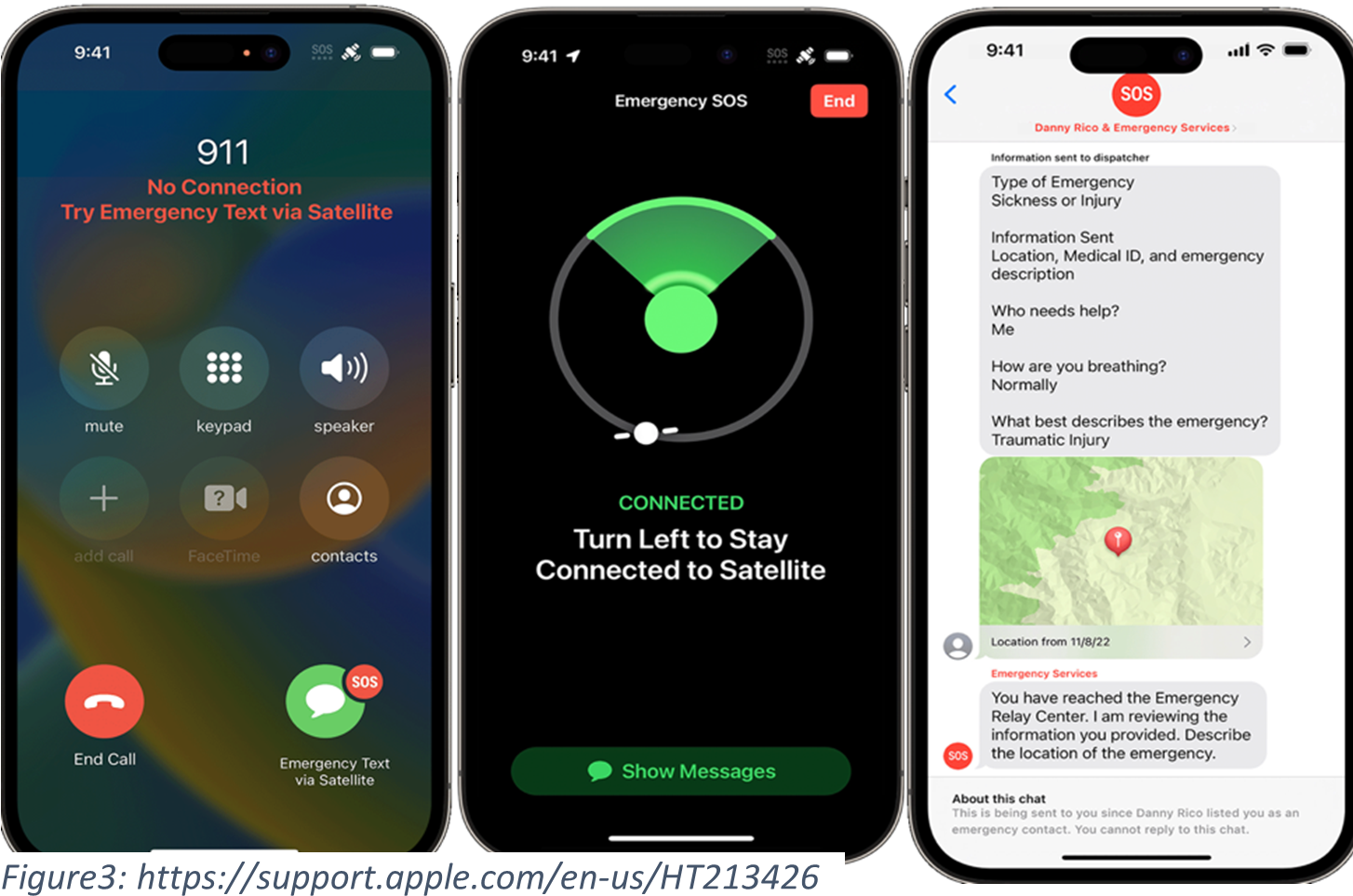
As previously mentioned, the iPhone is not the only device capable of transmitting a distress beacon or using the satellite network for communications. At the most basic level, anyone traveling into remote areas without cell coverage can carry what is known as a personal locator beacon (PLB). These devices can be used to send out a distress signal from anywhere in the world. They operate on two frequencies, sending signals to the GEOSAR and LEOSAR satellites, as well as a third GPS-specific MEOSAR system (Figure 4). This ensures a high probability of the signal being picked up by a satellite system and transmitted to a call center for dispatch to search and rescue teams. According to the company ACR, which produces the popular ResQLink PLB, you can be geo-located within 100 meters of your location within five minutes approximately 95% of the time. The device will continue to send a signal once triggered and has a stated battery life of 28 hours. Distressed persons then must wait for a rescue team to arrive. There is no way to send or receive messages on the device, but it offers the advantage of being an affordable, one-time purchase without the cost of a service subscription or fees for messaging or voice calls.
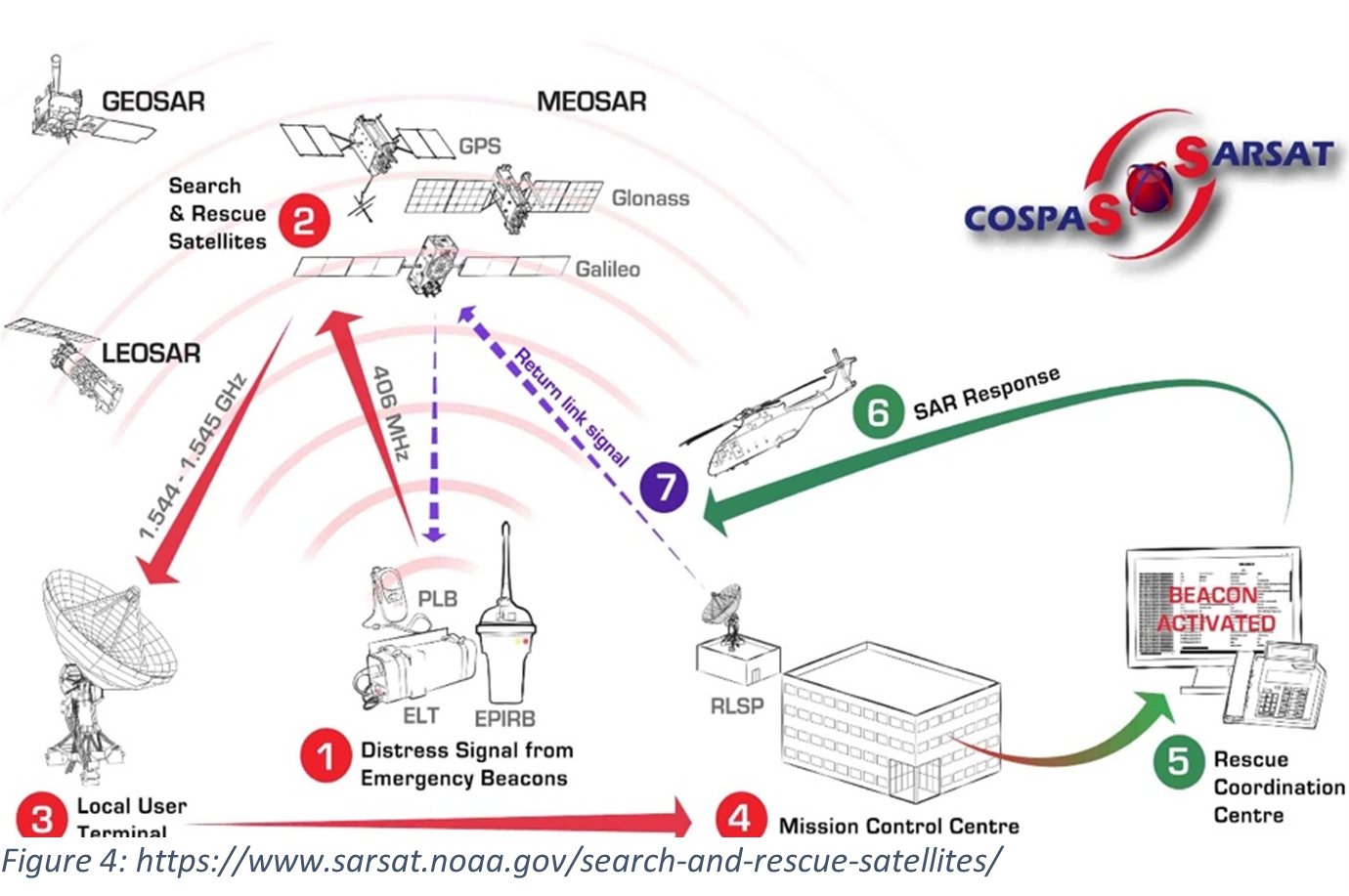
The remaining devices on the market all share similar features with variations in user interface, ease of use, portability, and connectivity. These devices all have a distress beacon that operates similarly to a PLB, with the added benefit of offering one-way or two-way text communications and features such as weather reports for the area of use. Garmin InReach and SPOT X (Figure 5) are two popular devices that offer two-way, on-device messaging with the presence of a screen and keyboard. ACR BivyStick and Zoleo Satellite Communicator are options that don’t offer on-screen messaging capabilities but allow for two-way messaging via Bluetooth from one’s cell phone to the device. The decision about which device is best for any given person or set of adventures comes down to personal preference for messaging, screen interfacing, reliability of network connectivity, as well as cost of device and service subscriptions (Figure 6).

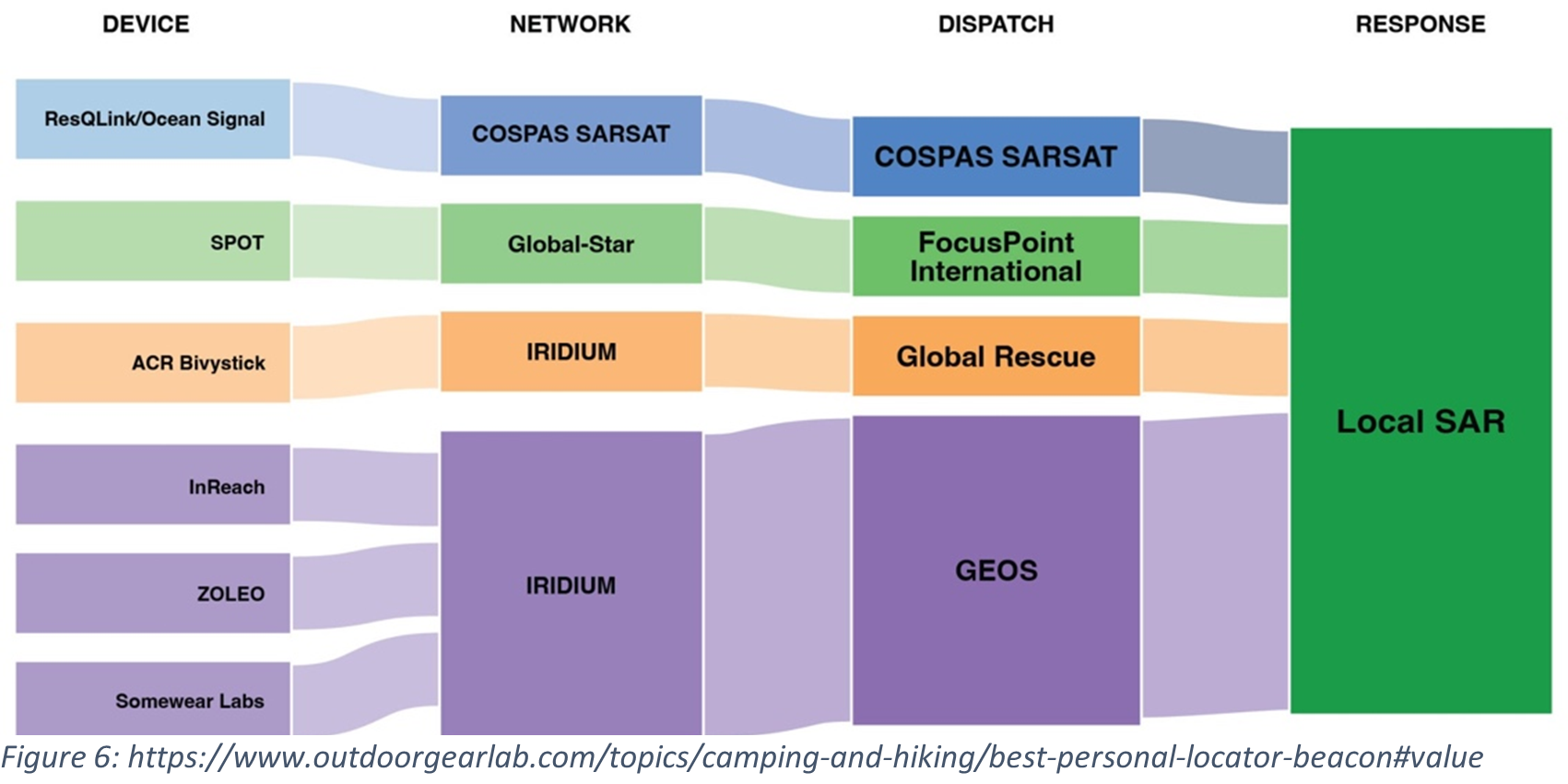
Undoubtedly, with likely millions of users gaining access to emergency SOS satellite signaling via their iPhone, there will be further increases in activation of emergency services and rescue teams for both true emergencies and false alarms. This has already proven true during the current ski season as reports from emergency responders indicate that the hard stops and falls of skiers, snowboarders, and snowmobilers have set off a rash of false crash detections in Apple’s series 8 Watches and iPhone 14s. Though the devices vibrate and sound an alarm for several seconds prior to completing the emergency call, heavy winter clothing and the noisy environment seem to thwart the user’s ability to realize the feature has been activated and emergency call centers are being overwhelmed. One option is for Apple users to deactivate the feature while participating in high speed, high impact activities; users will need to remember to turn it back on for times when it may truly be useful.
For many, Apple’s added feature will be a welcome bonus for those moments of unexpected disaster or as an emergency back-up when venturing into outdoor activities. For the more extreme adventurist, satellite messaging devices will likely remain preferred for the time being until Apple’s service has undergone further proofing. It remains to be seen whether or not Apple’s new SOS feature will be a factor in increasing the number of both prepared (and unprepared) outdoor enthusiasts into the backcountry and what this may mean for search and rescue teams.